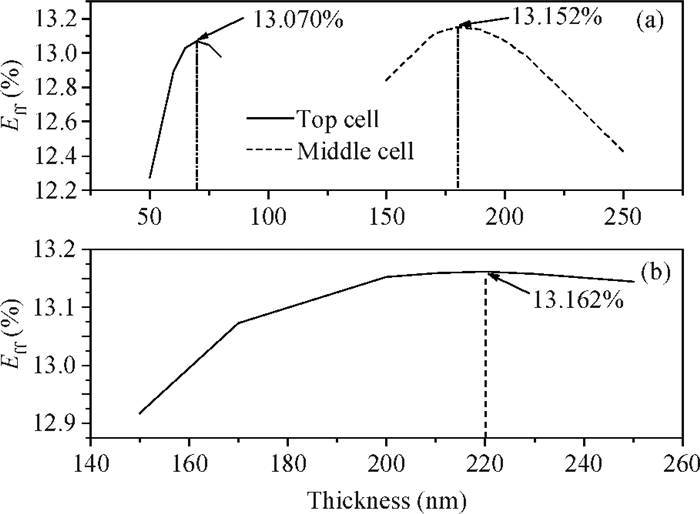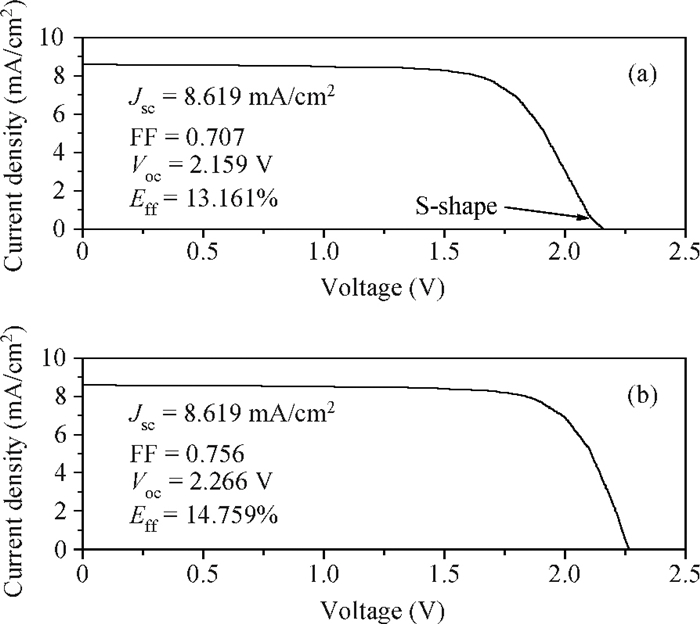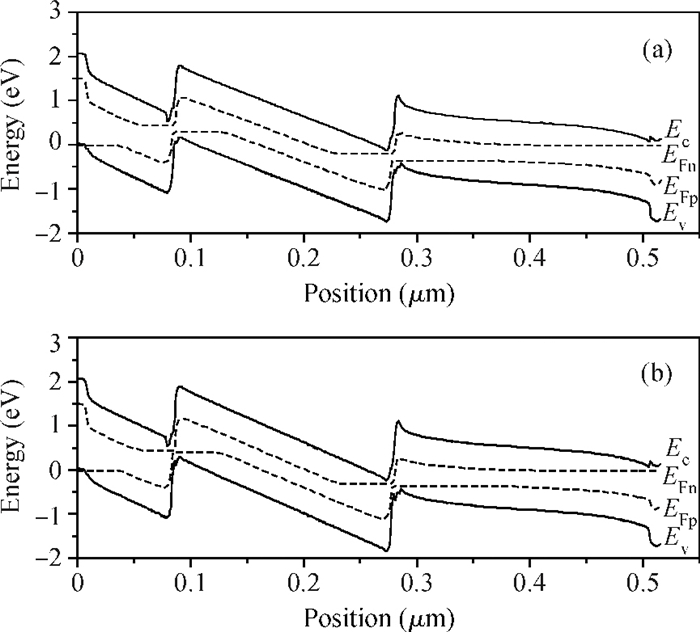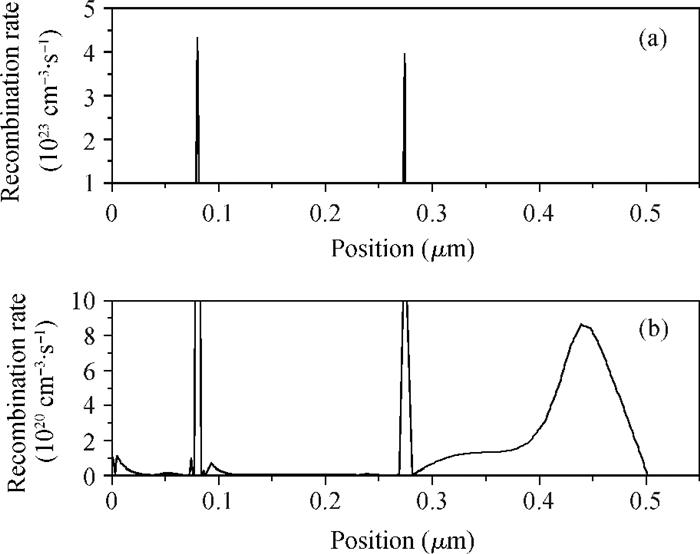| Citation: |
Shaoying Ke, Chong Wang, Tao Pan, Jie Yang, Yu Yang. Numerical simulation of the performance of the a-Si:H/a-SiGe:H/a-SiGe:H tandem solar cell[J]. Journal of Semiconductors, 2014, 35(3): 034013. doi: 10.1088/1674-4926/35/3/034013
****
S Y Ke, C Wang, T Pan, J Yang, Y Yang. Numerical simulation of the performance of the a-Si:H/a-SiGe:H/a-SiGe:H tandem solar cell[J]. J. Semicond., 2014, 35(3): 034013. doi: 10.1088/1674-4926/35/3/034013.
|
Numerical simulation of the performance of the a-Si:H/a-SiGe:H/a-SiGe:H tandem solar cell
DOI: 10.1088/1674-4926/35/3/034013
More Information
-
Abstract
The computer program AMPS-1D (analysis of microelectronic and photonic structures) has been employed to simulate the performance of the a-Si:H/a-SiGe:H/a-SiGe:H triple-junction solar cell at the radiation of AM1.5G (100 mW/cm2) and room temperature. Firstly, three sub-cells with band gaps of 1.8, 1.6 and 1.4 eV are simulated, respectively. The simulation results indicate that the density of defect states is an important factor, which affects the open circuit voltage and the filling factor of the solar cell. The two-step current matching method and the control variate method are employed in the simulation. The results show that the best solar cell performance would be achieved when the intrinsic layer thickness from top to bottom is set to be 70, 180 and 220 nm, respectively. We also optimize the tunnel-junction structure of the solar cell reasonably, the simulation results show that the open circuit voltage, filling factor and conversion efficiency are all improved and the S-shape current density-voltage curve disappears during optimizing the tunnel-junction structure. Besides, the diagram of the energy band and the carrier recombination rate are also analyzed. Finally, our simulation data are compared to the experimental data published in other literature. It is demonstrated that the numerical results agree with the experimental ones very well. -
References
[1] Staebler D L, Wronski C R. Reversible conductivity changes in discharge-produced amorphous Si. Appl Phys Lett, 1977, 31:292 doi: 10.1063/1.89674[2] Shimizu S, Komaru T, Okawa K, et al. Properties of amorphous silicon solar cells fabricated from SiH2Cl2. Sol Energy Mater Sol Cells, 2001, 66(1):289 doi: 10.1146/annurev.ms.10.080180.000355[3] Uesugi T, Ihara H, Matsumura H. The Staebler-Wronski effect in hydro-fluorinated amorphous silicon prepared using the intermediate species SiF2. Jpn J Appl Phys, 1985, 24(8):909 http://iopscience.iop.org/1347-4065/24/8R/909?recenthistorytab=viewed[4] Schmid U, Seidel H. Enhanced stability of Ti/Pt micro-heaters using a-SiC:H passivation layers. Sens Actuators A, 2006, 130:194 http://linkinghub.elsevier.com/retrieve/pii/S0924424705007673[5] Mokeddem K, Aoucher M, Smail T. Hydrogenated amorphous silicon nitride deposited by DC magnetron sputtering. Superlattices Microstruct, 2006, 40(4):598 http://adsabs.harvard.edu/abs/2006SuMi...40..598M[6] Tissot J L, Martin J L, Mottin E, et al. 320×240 microbolometer uncooled IRFPA development. Proc SPIE, Bellingham, 2000 http://cat.inist.fr/?aModele=afficheN&cpsidt=17443265[7] Keppner H, Meier J, Torres P, et al. Microcrystalline silicon and micromorph tandem solar cells. Appl Phys A, 1999, 69(2):169 doi: 10.1007/s003390050987[8] Yang J, Yan B, Guha S. Amorphous and nanocrystalline silicon-based multi-junction solar cells. Thin Solid Films, 2005, 487(1):162 http://linkinghub.elsevier.com/retrieve/pii/S0040609005000878[9] Kwak J, Kwon S W, Lim K S. Fabrication of a n-p-p tunnel junction for a protocrystalline silicon multilayer/amorphous silicon tandem solar cell. J Non-Cryst Solids, 2006, 352(9):1847 http://cat.inist.fr/?aModele=afficheN&cpsidt=17904855[10] Chang P K, Lu C H, Yeh C H, et al. High efficiency a-Si:H/a-Si:H solar cell with a tunnel recombination junction and a n-type μc-Si:H layer. Thin solid films, 2012, 520(9):3684 doi: 10.1016/j.tsf.2011.12.083[11] Löffler J, Gordijn A, Stolk R L, et al. Amorphous and micromorph silicon tandem cells with high open-circuit voltage. Sol Energy Mater Sol Cells, 2005, 87(1):251 http://linkinghub.elsevier.com/retrieve/pii/S0927024804003435[12] Belfar A, Mostefaoui R. AMPS-1D in a-Si:H/μ c-Si:H tandem solar cells. J Appl Sci, 2011, 11(16):2932 doi: 10.3923/jas.2011.2932.2939[13] Boussettine A A, Belhadji Y, Benmansour A. Modeling of tandem solar cell a-Si/a-SiGe using AMPS-1D program. Energy Procedia, 2012, 18:693 doi: 10.1016/j.egypro.2012.05.084[14] Hu W, Chen X, Zhou X, et al. Quantum-mechanical effects and gate leakage current of nanoscale n-type FinFETs:a 2d simulation study. Microelectron J, 2006, 37(7):613 doi: 10.1016/j.mejo.2005.09.002[15] Hu W, Chen X, Quan Z, et al. Study on quantum and short-channel effects for sub-50 nm FinFETS. J Infrared Millim W, 2006, 25:90 doi: 10.1088/1674-4926/35/3/034013[16] Information on http://www.psu.edu/dept/AMPS/[17] Liu Y, Sun Y, Rockett A. A new simulation software of solar cells-wxAMPS. Sol Energy Mater Sol Cells, 2012, 98:124 doi: 10.1016/j.solmat.2011.10.010[18] Rath J K, Rubinelli F A, Schropp R E I. Microcrystalline n-and p-layers at the tunnel junction of a-Si:H/a-Si:H tandem cells. J Non-Cryst Solids, 1998, 227:1282 http://linkinghub.elsevier.com/retrieve/pii/S0022309398003196[19] Hou J Y, Arch J K, Fonash S J, et al. An examination of the tunnel junctions in triple junction a-Si:H based solar cells:modeling and effects on performance. Proc 22nd IEEE PVSC, Nevada, 1991 http://ieeexplore.ieee.org/xpls/abs_all.jsp?arnumber=169410&isnumber=4399[20] VukadinoviM, Smole F, Topi M, et al. Numerical modelling of trap-assisted tunnelling mechanism in a-Si:H and μ c-Si n/p structures and tandem solar cells. Sol Energy Mater Sol Cells, 2001, 66(1):361 http://cat.inist.fr/?aModele=afficheN&cpsidt=867979[21] Furlan J, Gorup Ž, Smole F, et al. Tunnelling-assisted generation-recombination in pn a-Si junctions. Solid-State Electron, 1999, 43(9):1673 doi: 10.1016/S0038-1101(99)00135-5[22] Yan B, Zhao L, Zhao B, et al. Hydrogenated amorphous silicon germanium alloy with enhanced photosensitivity prepared by plasma enhanced chemical vapor deposition at high temperature. Vacuum, 2013, 89:43 doi: 10.1016/j.vacuum.2012.09.004[23] Lundszien D, Finger F, Wagner H. A-Si:H buffer in a-SiGe:H solar cells. Sol Energy Mater Sol Cells, 2002, 74(1):365 http://www.sciencedirect.com/science/article/pii/S092702480200096X[24] Yun S J, Kim J K, Lim J W. Amorphous SiGe:H thin film solar cells with light absorbing layers of graded bandgap profile. Electrochem Solid-State Lett, 2011, 15(2):B9 doi: 10.1149/2.020202esl[25] Li M B, Shi L B. Simulation on conversion efficiency of solar cells with different amorphous silicon/germanium absorber layer structures. J Chin Chem Soc, 2012, 40(7):934 http://en.cnki.com.cn/Article_en/CJFDTOTAL-GXYB201207004.htm[26] Belfar A, A$ {\rm{\ddot i}} $-Kaci H. Effect of incorporating p-type hydrogenated nanocrystalline silicon buffer layer on amorphous silicon n-i-p solar cell performances. Thin Solid Films, 2012, 525:167 doi: 10.1016/j.tsf.2012.10.060[27] Hsu H J, Hsu C H, Tsai C C. Improvement of a-Si1-xGex:H single-junction thin-film solar cell performance by bandgap profiling techniques. J Non-Cryst Solids, 2012, 358(17):2277 doi: 10.1016/j.jnoncrysol.2011.12.103[28] Kumar P, Kupich M, Bock W, et al. Microcrystalline single and double junction silicon based solar cells entirely prepared by HWCVD on textured zinc oxide substrate. J Non-Cryst Solids, 2006, 352(9):1855 http://cat.inist.fr/?aModele=afficheN&cpsidt=17904857[29] Zheng X X, Zhang X D, Yang S S. Effect of the n/p tunnel junction on the performance of a-Si:H/a-Si:H/μ c-Si:H triple-junction solar cells. Sol Energy Mater Sol Cells, 2012, 101:15 doi: 10.1016/j.solmat.2012.02.021[30] Yue G, Yan B, Yang J, et al. Hydrogenated amorphous silicon and silicon germanium triple-junction solar cells at high rate using RF and VHF glow discharges. Proc 33rd IEEE PVSC, New York, 2008 http://ieeexplore.ieee.org/stamp/stamp.jsp?tp=&arnumber=4922611[31] Yang J, Banerjee A, Guha S. Triple-junction amorphous silicon alloy solar cell with 14.6% initial and 13.0% stable conversion efficiencies. Appl Phys Lett, 1997, 70(22):2975 doi: 10.1063/1.118761[32] Deng X, Liao X, Han S, et al. Amorphous silicon and silicon germanium materials for high-efficiency triple-junction solar cells. Sol Energy Mater Sol Cells, 2000, 62(1):89 http://www.sciencedirect.com/science/article/pii/S0927024899001397 -
Proportional views





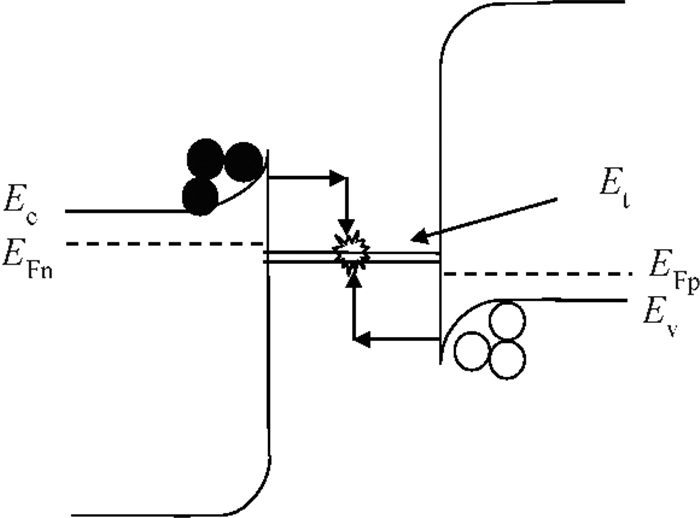
 DownLoad:
DownLoad:

